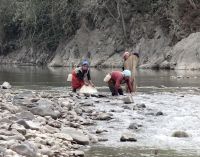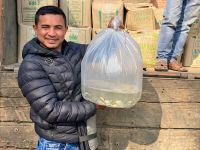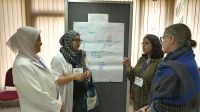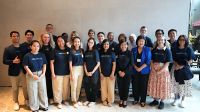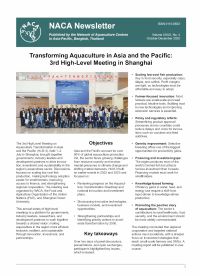Small indigenous fish species (SIS) are common in South and Southeast Asian inland waters and are often eaten whole. This article reviews evidence that SIS provide bioavailable vitamin A, iron, zinc, calcium and B12, alongside protein and long-chain omega-3s. It examines practical options for including SIS in carp ponds and rice-fish systems, drawing on recent field programmes, and identifies constraints, especially the seasonal, unreliable supply of seed from capture fisheries. The article considers which species are realistic candidates for hatchery production and what husbandry is required. The aim is to give producers, extension staff and policymakers a clear view of when SIS integration adds value, and what investments are needed to pilot and scale it responsibly.
How can small farms boost fish yields, cut feed bills and earn from more than one crop at a time? In Meghalaya’s Ri Bhoi district, one farmer shows the way with an integrated fish-duck-poultry system across four linked ponds. Ducks and poultry “pay their rent” by fertilising the water, which powers natural food webs for carp and rohu; simple gravity flow spreads nutrients and improves aeration. Over an eight-month cycle, the farm sells fish, ducks, poultry, eggs and even dyke crops like banana and turmeric - while keeping inputs low and water quality stable. This practical case study explains the layout, stocking plan and daily management behind the results, and why integrated aquaculture is a smart, climate-resilient option for small holders.
Pathum Thani, 5-6 October - NACA participated in the 3rd AQUADAPT Peer-Learning Event at the Asian Institute of Technology Conference Center. Partners reviewed progress on nature-based solutions (NbS) in aquaculture, shared experience and set priorities for the year ahead. The two-day programme combined project presentations, a world-café on climate resilience, and working sessions designed to turn research insights into practice.
The AquaHub project of NACA and FutureFish led a working session on “Knowledge brokering: Private sector engagement and nature-based and inclusive business models,” convening researchers and practitioners to sharpen strategies for scaling NbS through market actors across the value chain, from small-scale farmers and associations to SMEs and larger enterprises. Discussion centred on pragmatic engagement models that can connect research outcomes to investable, inclusive business opportunities.
Bangkok, 7 October - NACA convened a one-day, in-person working group to shape the vision, mission and strategy for the AquaHub, a startup incubator and support network for innovators in the aquaculture space. The workshop focused on establishing the AquaHub’s vision, mission, values and partnership principles to define how it will operate, and the immediate steps required to mobilise partners and resources across the Asia–Pacific.
Participants began by clarifying the problems AquaHub should address and why a dedicated hub is the right vehicle. Small group exercises produced draft vision and mission statements looking to 2035, which were then refined through rapid peer feedback. This work was grounded in a brief review of AquaHub’s current status and the wider innovation landscape to ensure complementarity with existing efforts.
In this issue:
- Transforming Aquaculture in Asia and the Pacific: 3rd High-Level Meeting in Shanghai.
- Watch the HLM-3 presentations on YouTube!
- Thailand to chart aquaculture transformation plan at Bangkok workshop.
- Third Asia-Pacific Laboratory Proficiency Testing Program for Aquatic Animal Diseases launched.
